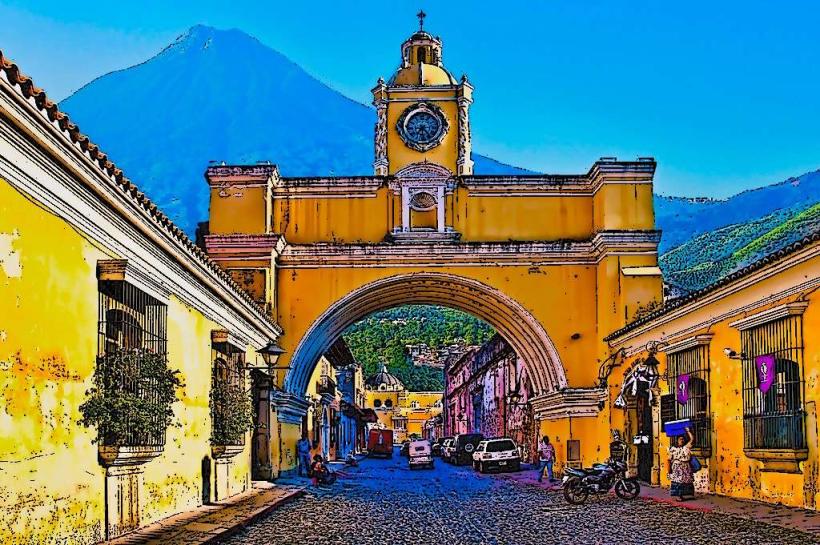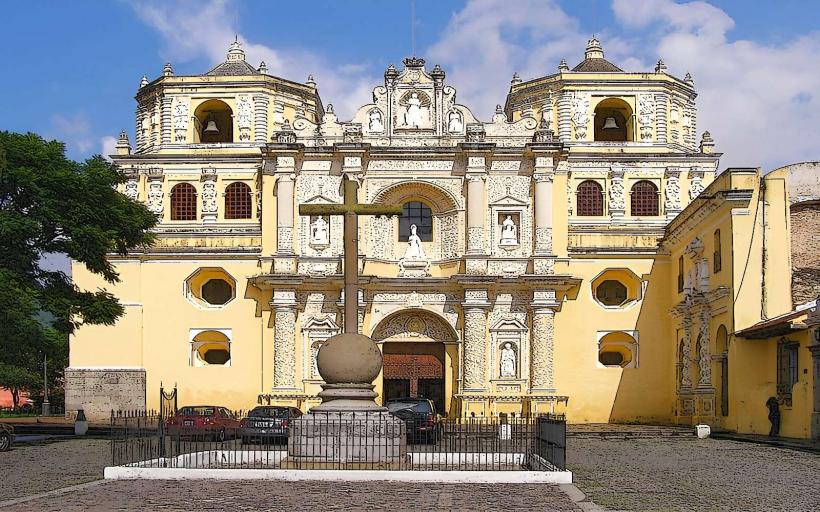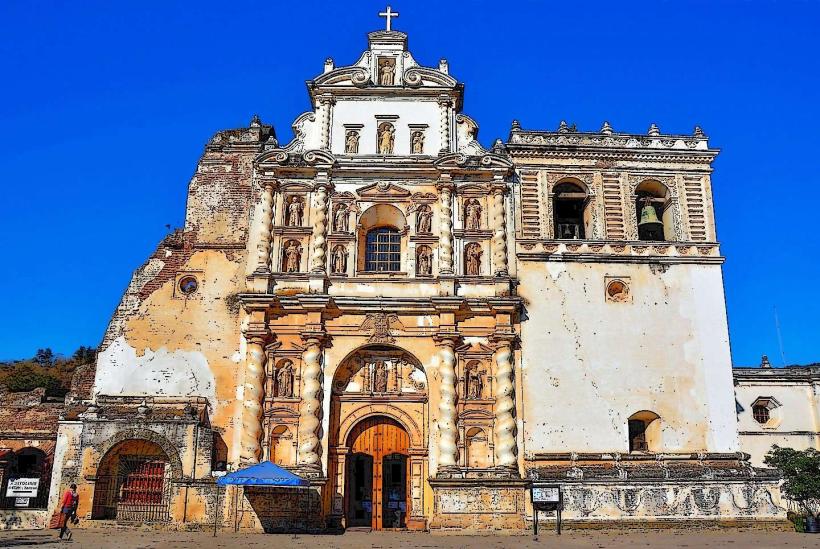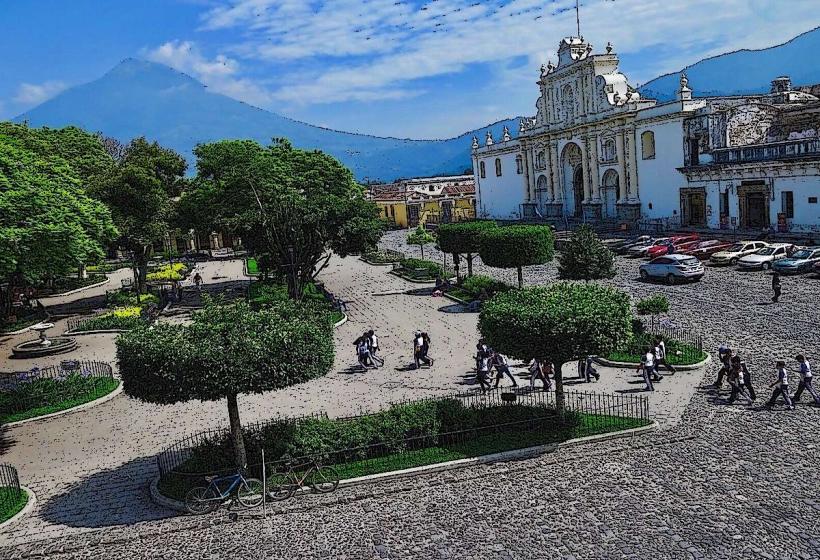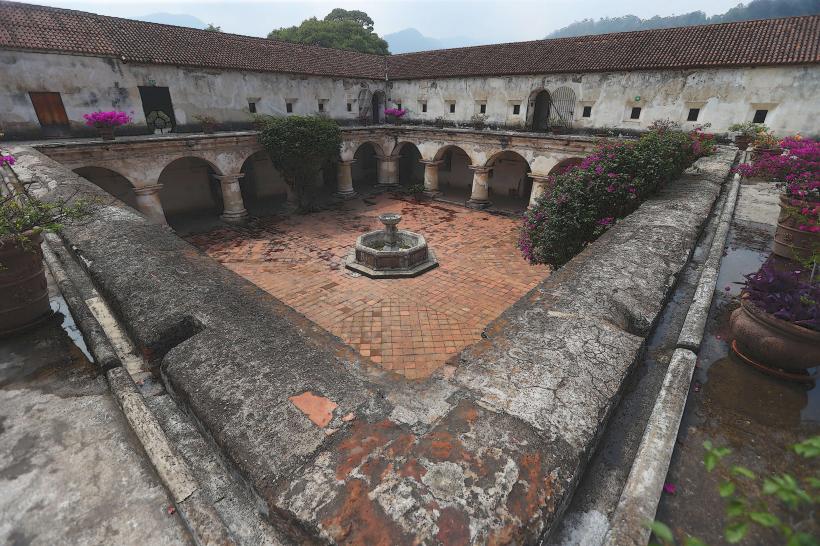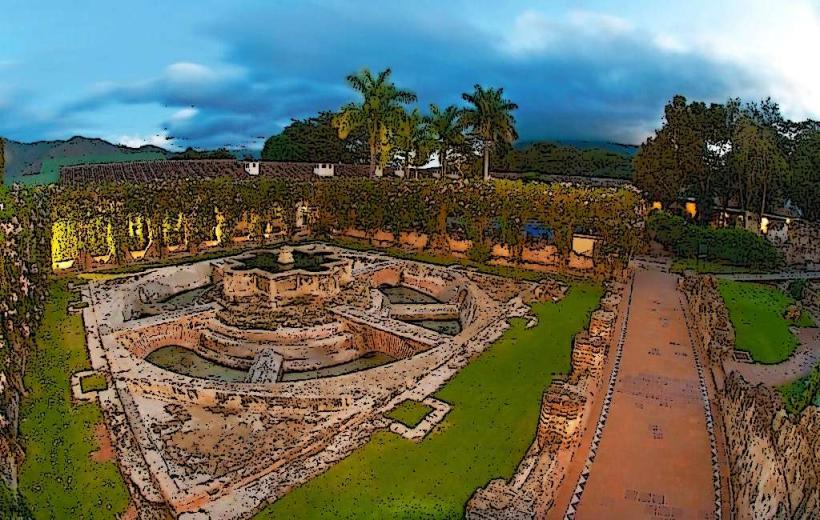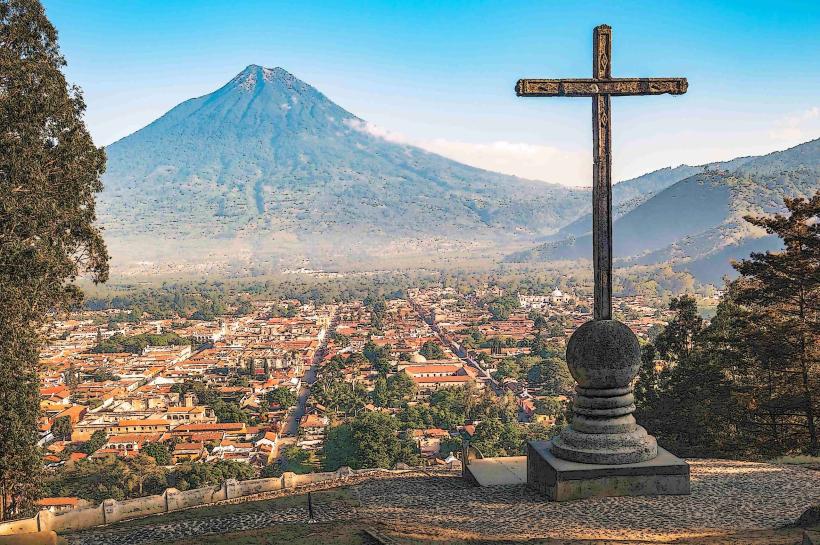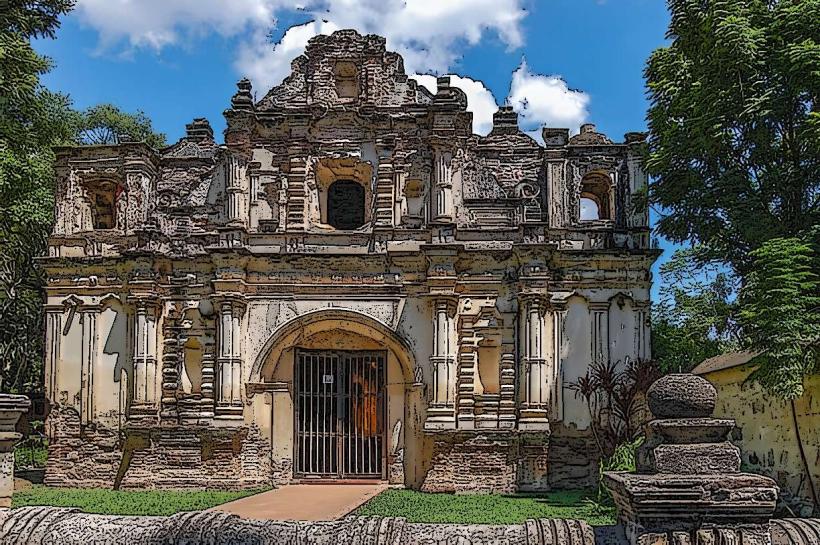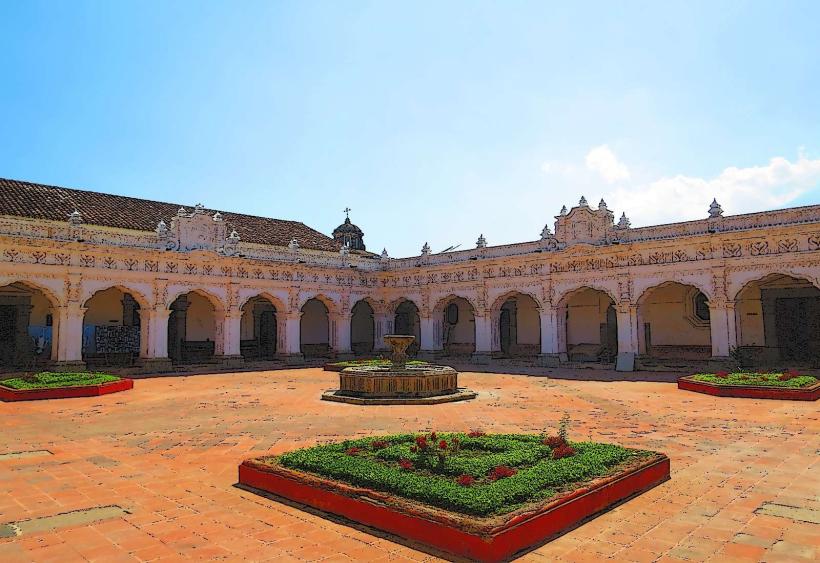Information
Landmark: Cathedral of SantiagoCity: Antigua Guatemala
Country: Guatemala
Continent: North America
The Cathedral of Santiago (Catedral de Santiago) is one of the most iconic landmarks in Antigua Guatemala and an essential part of the city's historical and religious heritage. Located on the northeastern edge of Parque Central, the cathedral is not only a symbol of the city but also a stunning example of colonial architecture.
History and Significance:
The Cathedral of Santiago was originally constructed in 1541, making it one of the oldest churches in Central America. It was dedicated to Saint James the Apostle (Santiago), the patron saint of Spain, and it served as the main church of Antigua during its time as the capital of the Kingdom of Guatemala under Spanish rule.
Over the years, the cathedral has witnessed numerous significant events in the history of the region, including colonial rule, independence, and religious rituals. It has been the site of important political and social gatherings, and it remains an essential place of worship for the people of Antigua.
In 1773, a devastating earthquake destroyed much of Antigua, including parts of the cathedral. While the main structure was heavily damaged, the ruins of the cathedral still stand today as a symbol of resilience. The cathedral’s restoration has allowed it to retain its significance as the central place of worship and a historical landmark.
Architectural Features:
The cathedral is an outstanding example of Baroque colonial architecture, with a blend of Renaissance and Moorish influences, reflecting the merging of Spanish and indigenous styles. Despite the damage it sustained in the 1773 earthquake, much of the church's design and decorative elements remain intact.
Facade:
The cathedral’s facade is one of its most striking features, with ornate carvings and decorative details that showcase the Baroque style. The intricate stonework includes depictions of religious symbols, angels, and saints. The facade is divided into several levels, with a central archway that leads into the church, flanked by columns and pilasters.
- Twin Towers: The cathedral originally had two towering bell towers, but one of them was severely damaged during the earthquake and has not been fully restored. The remaining tower still rises above the church, providing an impressive view of the surrounding area and adding to the cathedral’s monumental appearance.
- Carved Details: The facade includes a range of carved details, including Christian symbols, floral motifs, and reliefs of saints and biblical scenes. These decorative elements reflect the Spanish Baroque aesthetic, which was intended to inspire awe and reverence in those who entered.
Interior:
Inside, the cathedral is equally impressive, with its vast nave, soaring columns, and grand altars. Although the interior was also damaged during the earthquake, the restoration work has ensured that it remains a functional and beautiful place of worship.
- Altars and Artwork: The cathedral is home to several altars dedicated to saints and the Virgin Mary, with intricate woodwork and religious paintings. These altars are adorned with gold leaf and other decorative elements typical of the Baroque style. The main altar is dedicated to Saint James, and it features a large statue of the saint.
- Vaulted Ceilings: The ceilings of the cathedral are vaulted and feature frescoes and paintings that depict scenes from the life of Christ, the Virgin Mary, and various saints. These artworks are a testament to the religious devotion and artistic skill of the colonial period.
- Side Chapels: The cathedral has several side chapels, each with its own altar and religious art. These chapels provide space for private worship and reflection and are often dedicated to specific saints or religious figures.
- Columns and Arches: The interior is characterized by tall columns and arches that support the church’s high ceilings. The columns are elaborately decorated, and the arches create a sense of openness and grandeur within the space.
Cultural and Religious Role:
The Cathedral of Santiago continues to play an important role in the religious and cultural life of Antigua Guatemala. It remains the main Catholic church in the city and is used for daily masses, ceremonies, and religious festivals.
- Religious Celebrations: The cathedral is at the center of major religious celebrations in Antigua, including Easter (Semana Santa), Christmas, and the Feast of Saint James (Santiago). During these events, the church is filled with worshippers, and elaborate processions often pass through the Parque Central.
- Pilgrimages: Many people visit the cathedral as part of pilgrimages to seek blessings or to honor Saint James, the patron saint of the church. Saint James is a figure of great importance in the Catholic tradition, particularly for those who follow the Camino de Santiago (Way of St. James), a religious pilgrimage route in Spain.
Visiting the Cathedral:
The Cathedral of Santiago is one of the most visited sites in Antigua Guatemala. It is open to the public and free to enter, though visitors are expected to be respectful, as it is an active place of worship.
- Location: The cathedral is located on the eastern side of Parque Central, making it easily accessible to visitors exploring the central area of Antigua.
- Visiting Hours: The cathedral is open for regular masses and services throughout the week, and visitors can explore the church during non-service hours.
- Cost: There is no entrance fee, but donations are encouraged to support the church’s upkeep and its ongoing restoration efforts.
Nearby Attractions:
The Cathedral of Santiago is surrounded by several other important landmarks and attractions in Antigua:
- Parque Central: The central park where the cathedral is located, offering a place to relax and people-watch.
- Palacio de los Capitanes Generales: A historic building located just north of the cathedral, which once served as the seat of the Spanish colonial government in Antigua.
- La Merced Church: Another important Baroque church in Antigua, located a short walk from the cathedral.
- Santa Catalina Arch: A famous landmark of Antigua, providing an iconic view of the city’s volcanoes.
Conclusion:
The Cathedral of Santiago is one of the most significant historical and religious landmarks in Antigua Guatemala. Its combination of Baroque architecture, religious art, and historical importance make it a must-visit site for anyone exploring the city. Despite the damages caused by the 1773 earthquake, the cathedral remains a symbol of resilience, faith, and cultural heritage in Antigua, and it continues to serve as a place of worship and reflection for visitors and locals alike.

